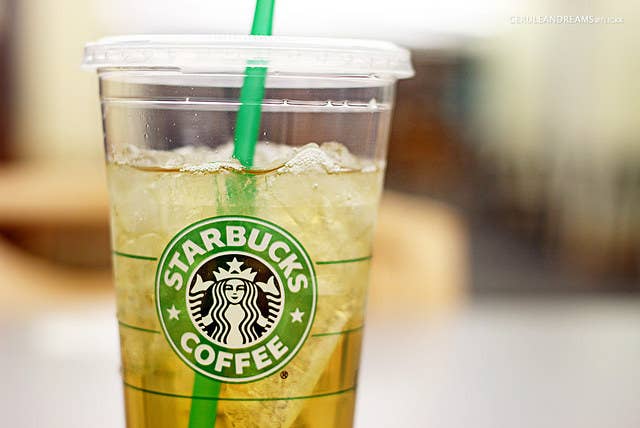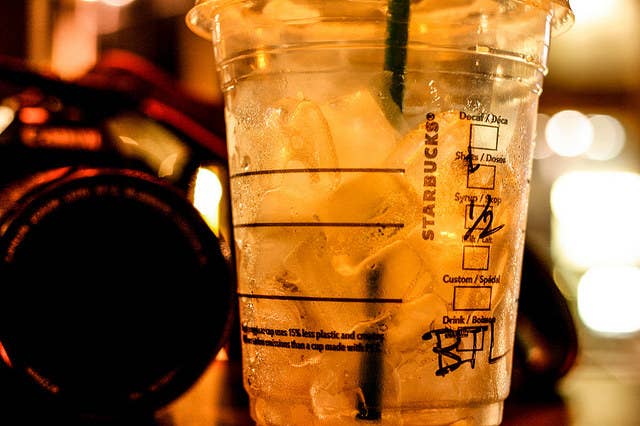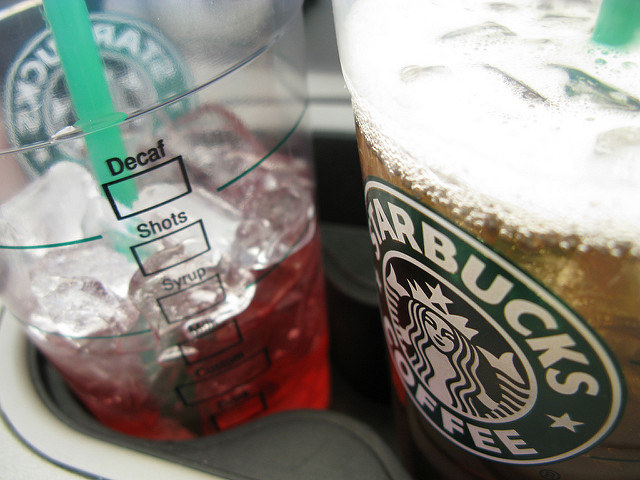
At Starbucks, a judge has ruled, a glass full of ice is not half empty.
Alexander Forouzesh, a Los Angeles resident and defender of the people, has lost his legal battle to stop Starbucks from filling its cups with too much ice. That ice, his lawsuit alleged, robbed thirsty customers of the precious ounces of fluid they paid for and are entitled to.
But on Friday, a California judge dismissed Forouzesh's claims that he and others were defrauded and "suffered injury in fact and lost money" due to the over-iced drinks.
"We are pleased with the court’s decision and the judge’s comments on the matter," a Starbucks spokesperson said in an emailed statement.
The lawsuit alleged that "a Starbucks customer who orders a Venti Cold Drink receives only 14 fluid ounces of that drink — just over half the advertised amount, and just over half the amount for which they are paying."
The injustice doesn't end there. "A Starbucks customer who orders and pay
for a Venti iced coffee, expecting to receive 24 fluid ounces of iced coffee based on Starbucks' advertisement and marketing, will instead receive only about 14 fluid ounces of iced coffee," he claimed.
But isn't the ice an integral part of the iced coffee? Not according to Forouzesh. Ice, his suit declared, is not a "fluid."
There is, in fact, an official measurement system Starbucks uses for ice in its cold drinks. Just look at the lines on the cup: depending on the drink, the lines are used as a reference for how much liquid should be added. In an iced coffee, for example, the cup is filled to the third line and then topped with ice.

Forouzesh said he is "among the millions of consumers" who "relied on Starbucks' misrepresentations in purchasing Cold Drinks, and would not have paid as much if anything, for the Cold Drinks had the true facts regarding the true amount of fluid ounces they were getting been disclosed."
Other restaurant companies have been brought to court for misleading customers about the volume of their foods. Subway, for instance, settled a suit in March alleging its footlong sandwiches were sometimes only 11 inches long.
In the Starbucks case, the judge ruled "a reasonable consumer would understand that the iced beverage that consumer might order from Starbucks will contain some portion of liquid and some portion of ice."
Deep. But it gets deeper:
"...as young children learn, they can increase the amount of beverage they
receive if they order “no ice.” If children have figured out that including ice in a cold beverage decreases the amount of liquid they will receive, the Court has no difficulty concluding that a reasonable consumer would not be deceived into thinking that when they order an iced tea, that the drink they receive will include both ice and tea and that for a given size cup, some portion of the drink will be ice rather than whatever liquid beverage the consumer ordered.This conclusion is supported by the fact that the cups Starbucks uses for its Cold Drinks, as shown in the Complaint, are clear, and therefore make it easy to see that the drink consists of a combination of liquid and ice.
Starbucks isn't in the clear just yet. There's another ice-related lawsuit against the coffee chain in Illinois, and "two claiming it underfills hot drinks by over-aerating the milk," reported Grubstreet.

